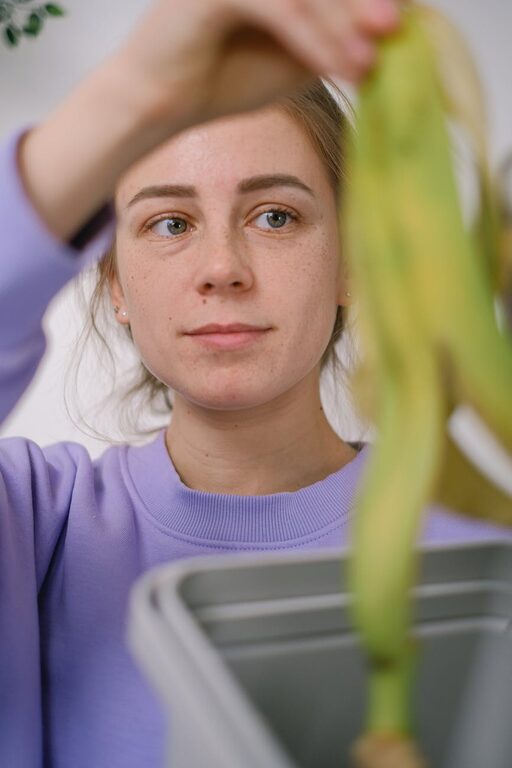Composting is a fantastic way to reduce household waste, enrich your garden soil, and contribute to a healthier environment. If you’re new to composting, the process can seem a bit confusing at first. Don’t worry—this guide will walk you through the basics with simple tips to get your home composting project up and running smoothly.
What is Composting?
Composting is the natural process of breaking down organic materials like food scraps and yard waste into a dark, crumbly material called compost. This material is rich in nutrients and can improve soil health, helping plants grow strong and healthy.
Why Start Composting at Home?
– Reduce Waste: Composting keeps organic waste out of landfills, reducing methane emissions.
– Improve Soil: Compost adds nutrients and improves soil structure.
– Save Money: Reduce the need for chemical fertilizers and buy less soil conditioner.
– Support the Environment: Composting supports a circular ecosystem by recycling natural materials.
Choosing the Right Composting Method
There are several composting methods suitable for home use. Here are a few popular ones:
1. Traditional Compost Bin
A compost bin is a container where you can build your compost pile. Bins help contain the compost, retain heat, and keep pests away. You can purchase one or make your own from wood or plastic.
2. Compost Tumbler
A tumbler is a closed container that you can rotate to mix your compost easily. This speeds up decomposition and is usually more pest-resistant.
3. Worm Composting (Vermicomposting)
This method uses worms to break down organic waste quickly. Worm compost bins are great for indoor use and small spaces.
Getting Started: Basic Materials to Compost
Compost needs a balance of two types of materials:
– Greens: Nitrogen-rich items like fruit and vegetable scraps, coffee grounds, and fresh grass clippings.
– Browns: Carbon-rich materials such as dry leaves, cardboard, paper, and small branches.
What to Compost
– Fruit and vegetable scraps
– Coffee grounds and tea bags
– Eggshells (crushed)
– Grass clippings
– Dry leaves and plant trimmings
– Shredded newspaper or cardboard
What NOT to Compost
– Meat, dairy, and oily foods (attract pests)
– Diseased plants
– Pet waste
– Treated wood or plants with pesticides
Step-by-Step Guide to Building Your Compost
Step 1: Choose a Location
Select a spot in your yard that’s convenient, well-drained, and partially shaded.
Step 2: Set Up Your Bin or Pile
Place your compost bin or start a pile directly on the ground to allow beneficial organisms to enter.
Step 3: Layer Your Materials
Start with a layer of coarse browns like small twigs to help with airflow. Then alternate layers of greens and browns, aiming for a ratio of about 3 parts browns to 1 part greens.
Step 4: Maintain Moisture
Your compost should be moist like a wrung-out sponge. Add water if it’s too dry or add more browns if it’s too wet.
Step 5: Turn the Pile Regularly
Mix your compost every 1-2 weeks to provide oxygen, which speeds up decomposition and prevents odors.
Troubleshooting Common Composting Problems
| Issue | Cause | Solution |
|———————-|——————————-|———————————|
| Foul smell | Too much green or wet material | Add more browns and turn pile |
| Pests | Food scraps left uncovered | Bury scraps and secure bin |
| Slow decomposition | Not enough air or moisture | Turn pile and adjust moisture |
| Compost too dry | Lack of water | Add water and green materials |
Harvesting and Using Your Compost
Compost is ready when it’s dark, crumbly, and smells earthy, which usually takes 2-6 months depending on conditions.
How to Use Compost
– Mix it into garden beds as a soil amendment.
– Add it to potted plants to improve drainage and nutrients.
– Spread it as mulch around trees and shrubs.
Tips to Make Composting Successful
– Chop or shred larger materials to speed up breakdown.
– Keep a small container in your kitchen for easy collection of scraps.
– Avoid overloading your bin with just greens or brown materials.
– Be patient; composting is a natural process that takes time.
Final Thoughts
Composting at home is a rewarding way to help the planet while improving your garden. Starting small, paying attention to balance, moisture, and air, and maintaining your compost pile will lead to great results. Soon, you’ll enjoy nutrient-rich compost that nourishes your plants and reduces your environmental footprint. Happy composting!

